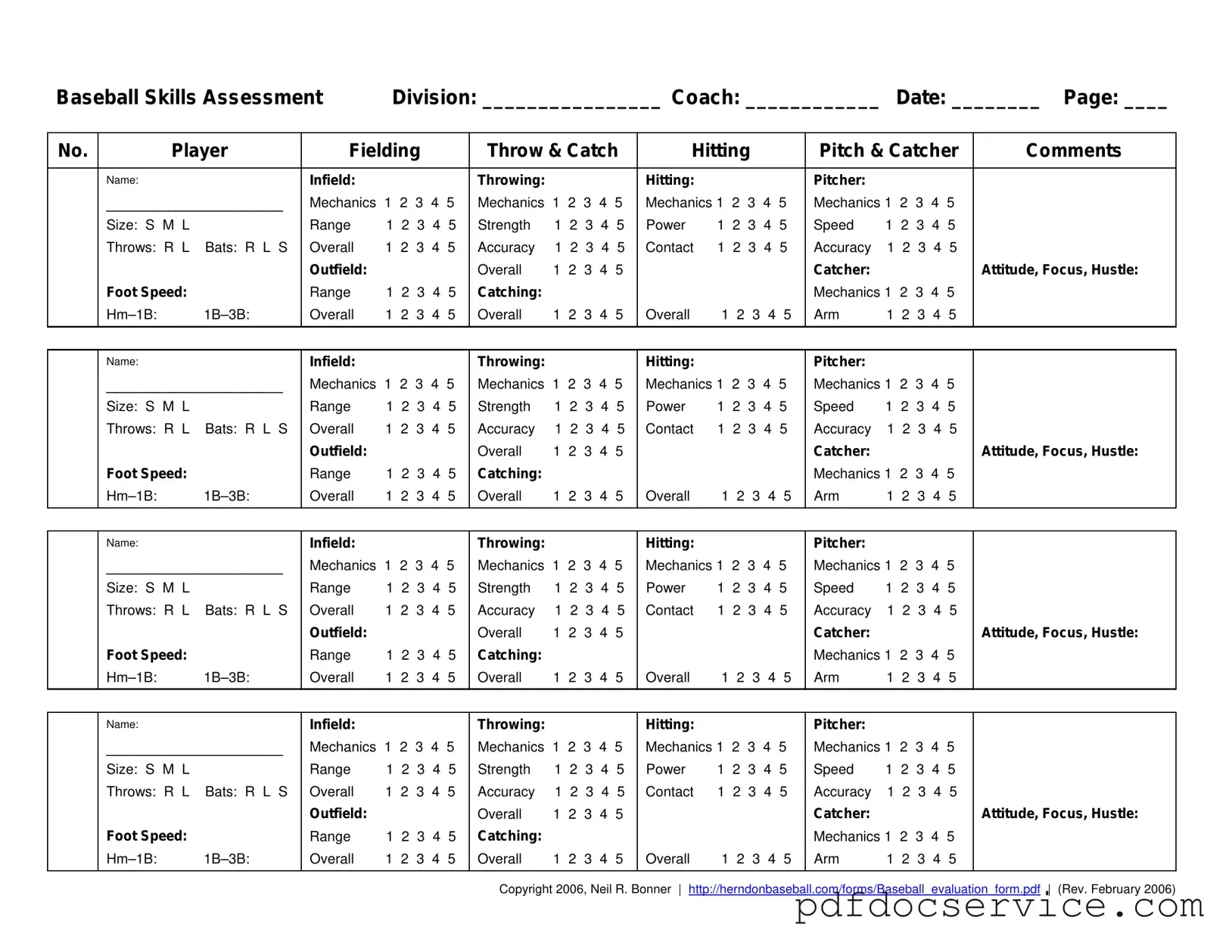The Baseball Assessment form serves as a crucial tool for coaches during player evaluations, especially in tryouts for All-Star travel teams and local leagues. This form is structured to assess various skills that players need to excel in baseball. Coaches evaluate players on key aspects such as fielding, throwing, catching, and hitting, using a straightforward five-point scale. Each skill is broken down into specific mechanics, allowing for a detailed analysis of a player's capabilities. For instance, infield and outfield skills are assessed separately, with categories for range, strength, and accuracy. Additional factors like attitude, focus, and hustle also play a significant role in the overall evaluation. The form includes sections for pitchers and catchers, recognizing the unique skills required for these positions. By quantifying each player's abilities, the assessment helps ensure a fair selection process for team placements. Ultimately, this comprehensive evaluation method not only aids in team selection but also provides valuable feedback for players looking to improve their skills.
